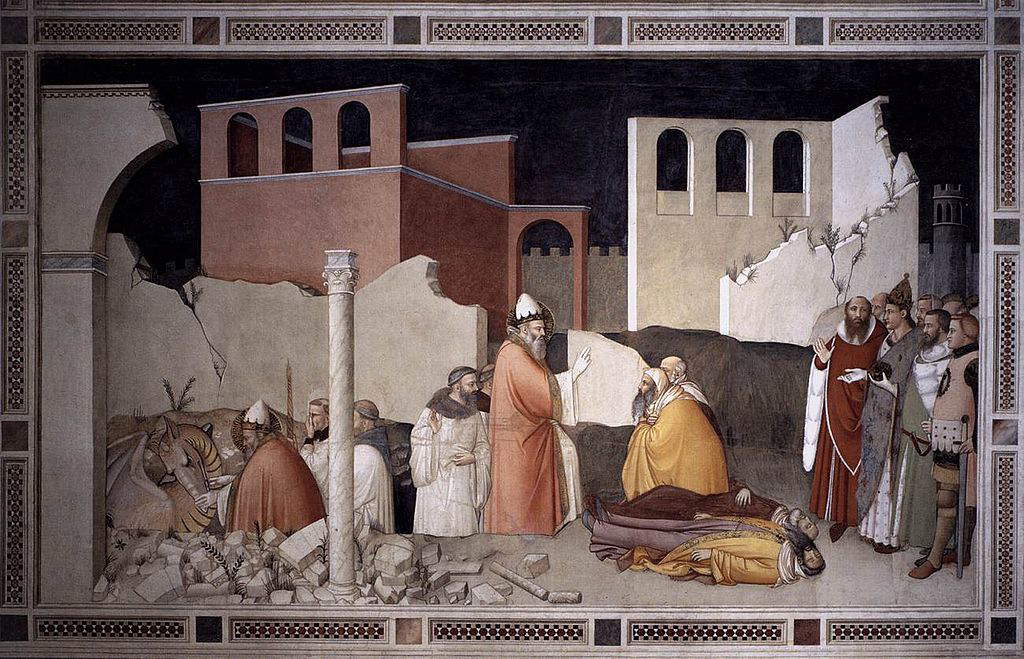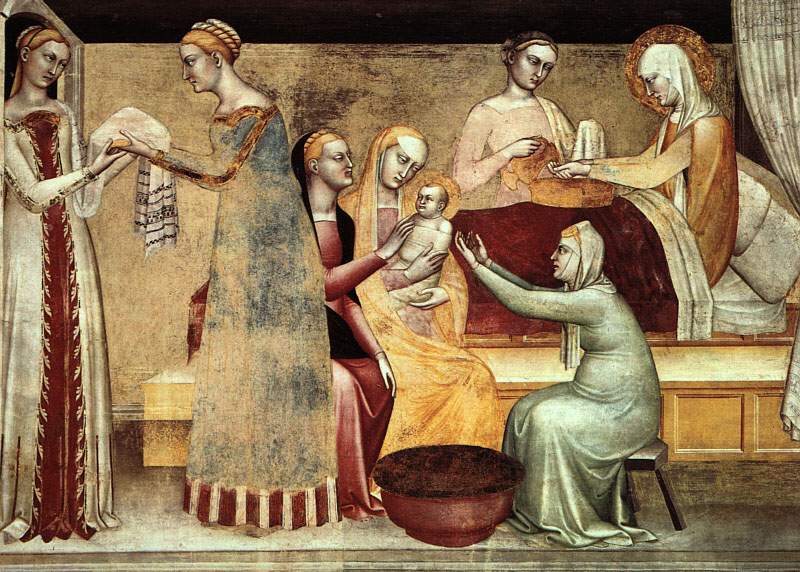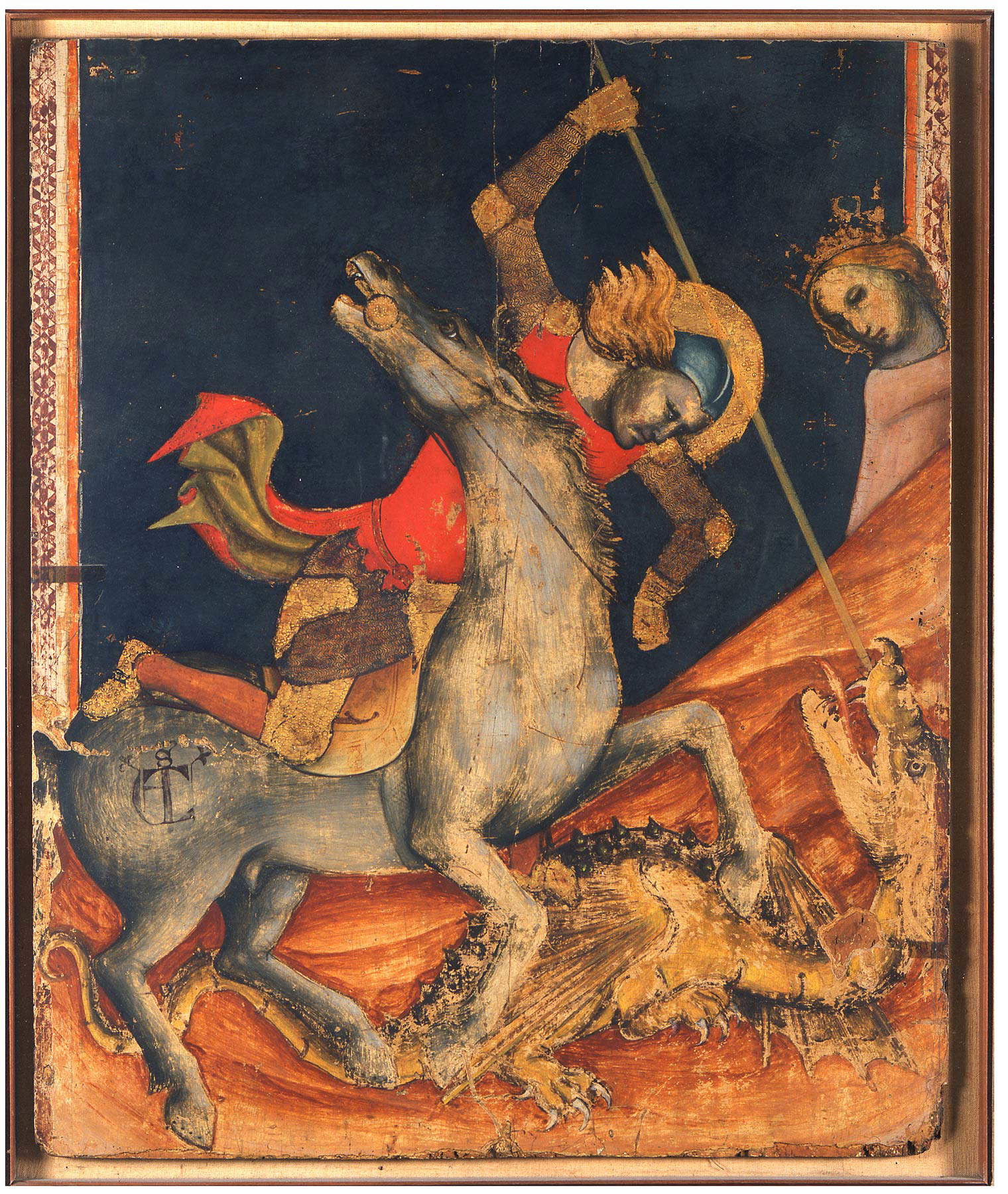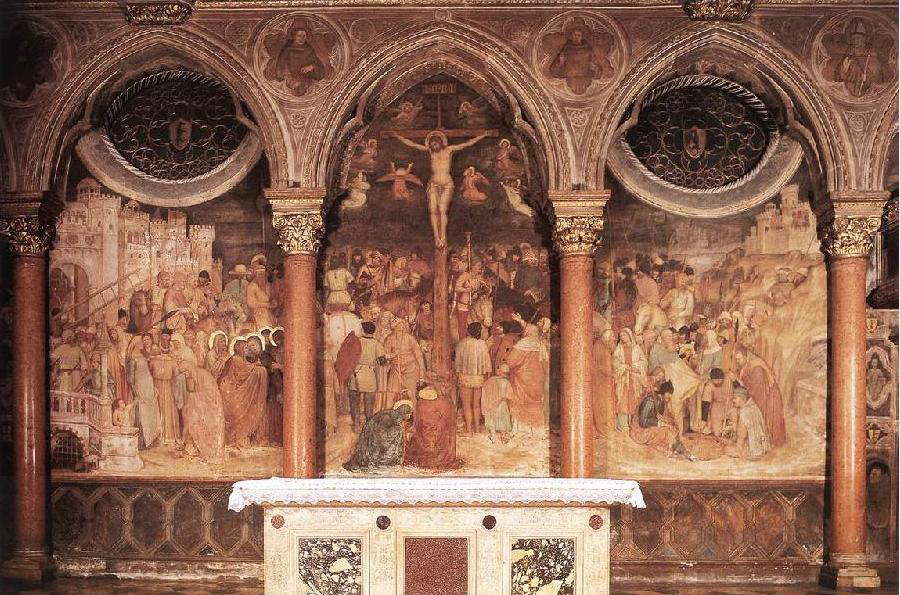Almost all 14th-century painting in Italy came to terms with Giotto ’ s lesson: Giotto in fact had been responsible for an authentic revolution that, from Florence, Assisi and Padua, that is, the major centers where the Florentine artist worked, radiated to different parts of Italy, especially in the north.
However, the main artists did not propose mere imitations of Giotto’s dictate, but each one declined the style of the master according to his own taste, cultural substratum, and personal inclination. The principal Giottesque painters who worked in 14th-century Florence also operated along these lines, where the leading personalities were those of Taddeo Gaddi (c. 1300 - 1366), Bernardo Daddi (Florence, c. 1290 - c. 1348) and Maso di Banco (Florence, news from 1341 to 1346). The former was the artist of closest Giottesque observance, but he declined Giotto’s style in a more elegant sense, with Gothic forms characterized by elongated figures and a lively taste for narrative that almost took on the connotations of the courtly fairy tale(Apparition of the Angel to the Shepherds, 1338, Florence, Santa Croce). The same drive toward a more elegant Giottism connoted the art of Bernardo Daddi, who showed that he was familiar with and influenced by fourteenth-century Sienese art, while Maso di Banco provided a personal interpretation of Giottesque spatiality in terms of more abstract geometry and a very lively colorism with often contrasting chromatics (Frescoes of the Chapel of San Silvestro, c. 1340, Florence, Santa Croce).


In Lombardy the stylistic dictate of Giotto, who moreover worked in Milan, where he was called in 1335 by Azzone Visconti (but his Milanese works have all been lost), was spread by Giovanni da Milano (news from 1346 to 1369): active between Florence and Milan, he declined Giottesque language with a taste for luminosity and delicacy and an interest in vivid naturalistic description (as in the Birth of the Virgin in the Rinuccini Chapel, 1365, Florence, Santa Croce) that made him an important forerunner of international Gothic.
Another region that experienced a profound influence of Giotto’s language wasEmilia, where the leading personality was Vitale degli Equi, also known as Vitale da Bologna (news from 1330 to 1359): in a city, Bologna, where a fertile and lively school of miniaturists was active, Vitale da Bologna knew how to fuse together Giottesque volumetries, the refinement of Bolognese miniature and a certain dose of naturalism that connoted his style (the most typical example is that of his most famous masterpiece, St. George and the Dragon, c. 1330-1335, Bologna, Pinacoteca Nazionale). All this was also in light of what had previously been produced in Romagna: in Rimini, where there was a lack of an artistic tradition of depth, a school was formed that reflected Giottesque dictates and gathered around the two personalities of Giovanni da Rimini (Rimini, news from 1292 to 1309) and Giuliano da Rimini (news from 1307 to 1324). With recourse to a more ancient Byzantine tradition, the Rimini painters were among the very first to transpose Giotto’s language and allow it to spread. Also active later in Emilia was Tommaso da Modena (Modena, 1326 - 1379), a painter who combined Giotto’s plastic sense with a very careful physiognomic study in the rendering of the expressions of the characters in his works (most evident in the cycle of the illustrious Dominicans, 1352, Treviso, Chapter House.



Finally, the spread of Giotto’s language could not fail to affect the Veneto, since Giotto, as anticipated, was also active in Padua. Indeed, it was the Veneto that was one of the regions where Giotto’s stylistic dictate found the most fertile ground. In the Veneto, before Giotto, a strongly Byzantine art was being produced, given also Venice ’s relations with the East. The first prominent artist to attempt a renewal was Paolo Veneziano (news from 1333 to 1358), who made a synthesis between Giotto and Byzantine art, but it was mainly the artists of the next generation who were the best interpreters of Giotto’s lesson. The first of these was Guariento di Arpo (news from 1338 to 1370): he, too, started from the Byzantine art of the Veneto of the time, rereading it in the light of Giotto’s achievements in Padua (Guariento in fact came from the areas around Padua).
Even more innovative, however, were Giusto de’ Menabuoi (Florence, 1320/30 - Padua, 1390) and Altichiero da Zevio (Zevio, c. 1330 - Verona, c. 1393). The former, a Florentine, soon moved to Padua but was also active in Lombardy, so that his art turns out to be a combination of the typical characteristics of the three areas of Italy in which he worked: this singular fusion gave rise to a highly original painting, endowed with great solidity, certainly not without refinement, but also with an interesting naturalism and a taste for description, albeit with some references to Byzantine hieraticism. These are all characteristics found in his frescoes in the baptistery of Padua, painted between 1375 and 1378: they are among the greatest masterpieces of 14th-century art. Like Giusto de’ Menabuoi, Altichiero da Zevio also worked in Padua, where he became acquainted with Giotto’s frescoes. Altichiero’s production stood out for its innovative charge because he gave his scenes a realism and narrative vividness never seen before, with meticulous descriptions of the seemingly most insignificant details, which in the end seem to capture the attention more than the protagonists of the compositions. These aspects can be seen well in the Crucifixion (1376-1379; Padua, Basilica of St. Anthony, Chapel of St. James), where characters appear intent on a wide variety of activities (such as the figure on the left with the ladder).


 |
| Giottesque art in northern Italy |
Warning: the translation into English of the original Italian article was created using automatic tools. We undertake to review all articles, but we do not guarantee the total absence of inaccuracies in the translation due to the program. You can find the original by clicking on the ITA button. If you find any mistake,please contact us.